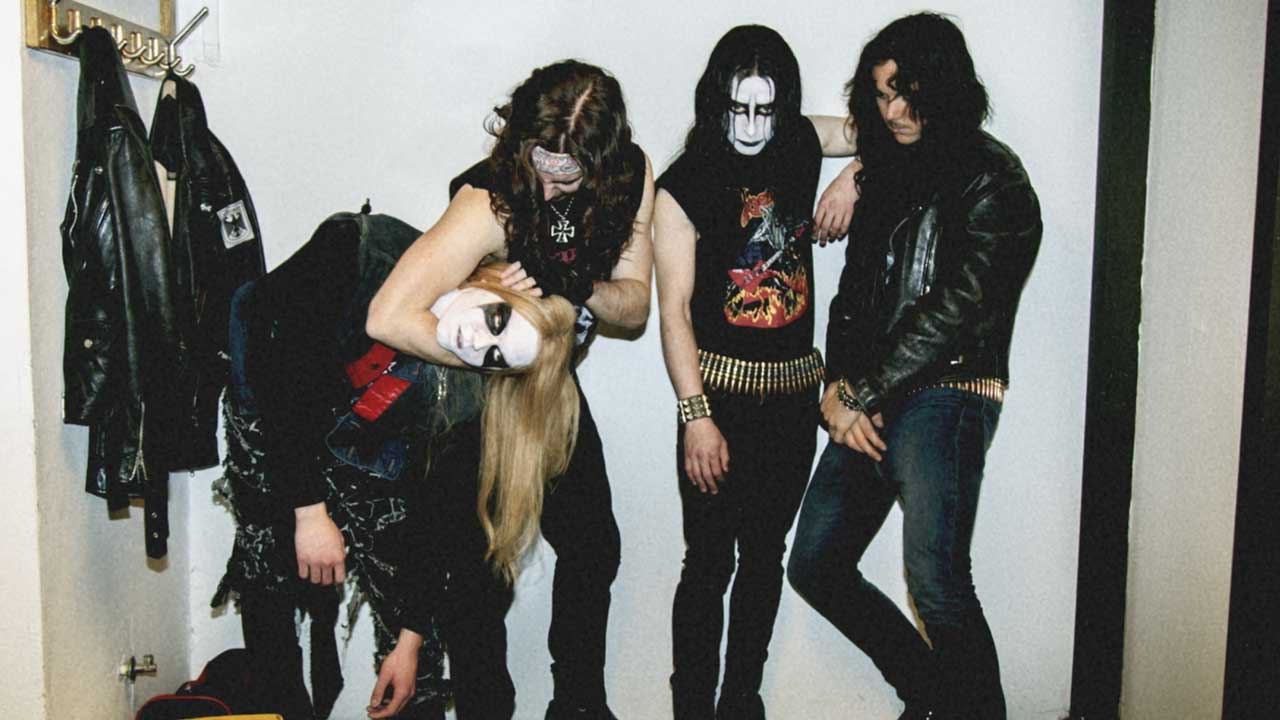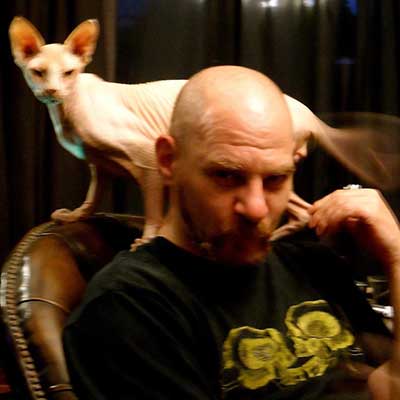The story was never going to go away. More than 25 years after the death of Mayhem co-founder Øystein ‘Euronymous’ Aarseth at the hands of his friend, brief bandmate and Burzum founder Varg Vikernes in Oslo, the accompanying tale of suicide, betrayal, church burnings and murder has remained a source of mystery,lore and rampant speculation, aided by the fact that the black metal movement Mayhem founded – and the band themselves – are still going strong.
In an act of fate worthy of the tale at their heart, two very different, but often complementary histories of Mayhem have emerged. The first is the long-awaited, and feared, movie, Lords Of Chaos, directed by one-time drummer for proto-black metallers Bathory and celebrated video director, Jonas Åkerlund. The second, The Death Archives, by Mayhem’s other founder, bassist Jørn ‘Necrobutcher’ Stubberud, is a personal recounting of Mayhem’s first 10 years, along with reams of photographic documentation.
Both plot their course from the inauspicious yet ambitious formation of the band through the suicide by gunshot of Swedish vocalist Per Yngve Ohlin, known infamously as Dead and personally as Pelle, to Necrobutcher’s decision to remove himself from the band – before returning three years later – and Euronymous’s murder. But whereas The Death Archives suggests the devil really is in the details, offering episodic first-hand accounts of the grit, grime and determination of a band forging a new scene through act of will, Lords Of Chaos attempts to weave a grand narrative. It focuses on the often-fractious relationship between Varg and Euronymous, its escalation and ripple effects into the spate of church burnings, the murder of a gay man at the hands of Emperor drummer Bård ‘Faust’ Eithun, and the possible motivations for why, on August 10, 1993, Varg went to Euronymous’s apartment armed with a knife and stabbed him multiple times.
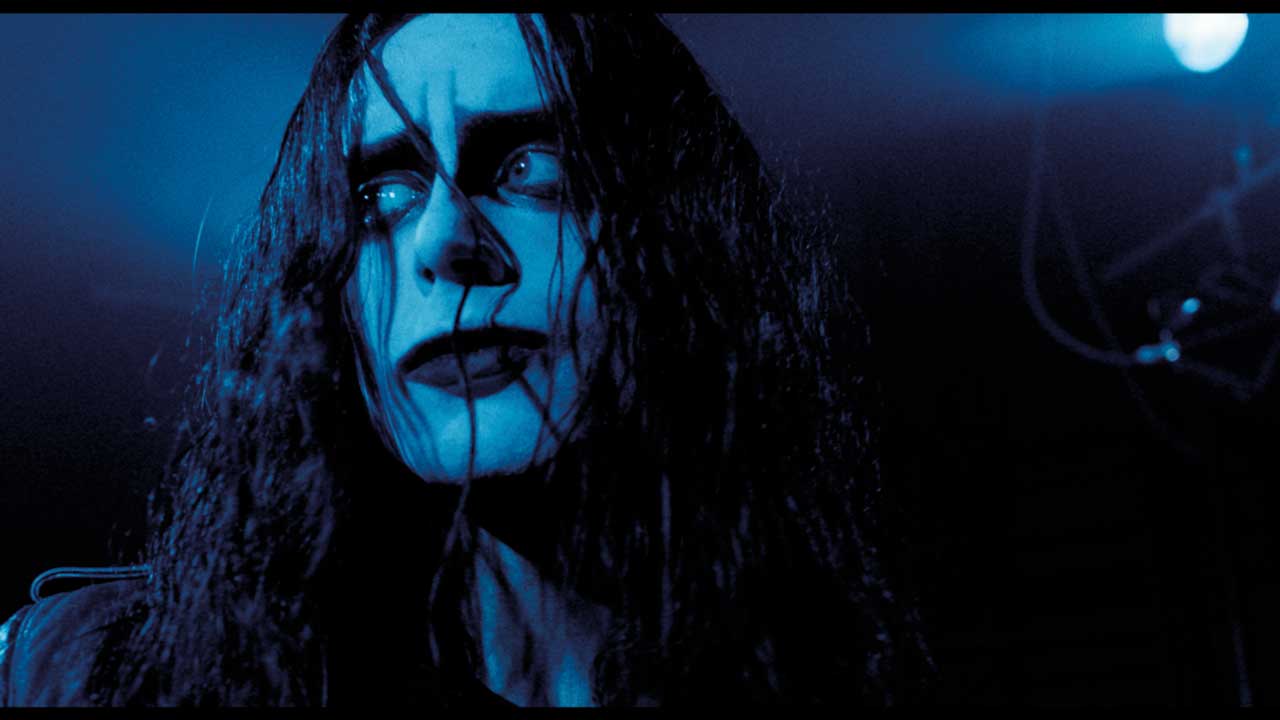
Extensively researched, with input from Euronymous’s parents and famous band photographs painstakingly reproduced, Lords Of Chaos sets out to balance the infamous plot points with the personal tribulations, and transformations, of the people involved.
“I wanted to make a movie that humanises these characters,” says Jonas down a phone line from LA, “because all the documentaries and books that have come out depict monsters and demons. And the truth is that they were young boys. But they were very driven. They started bands, they recorded, they started their own labels, they started record stores, they burned down churches and killed people: it’s a lot of work. They were very young, driven children, basically, and I wanted to humanise them and portray young boys who really didn’t have anything to blame. They were not beaten up, they didn’t come from poor families, there was no real excuse for what they did.”
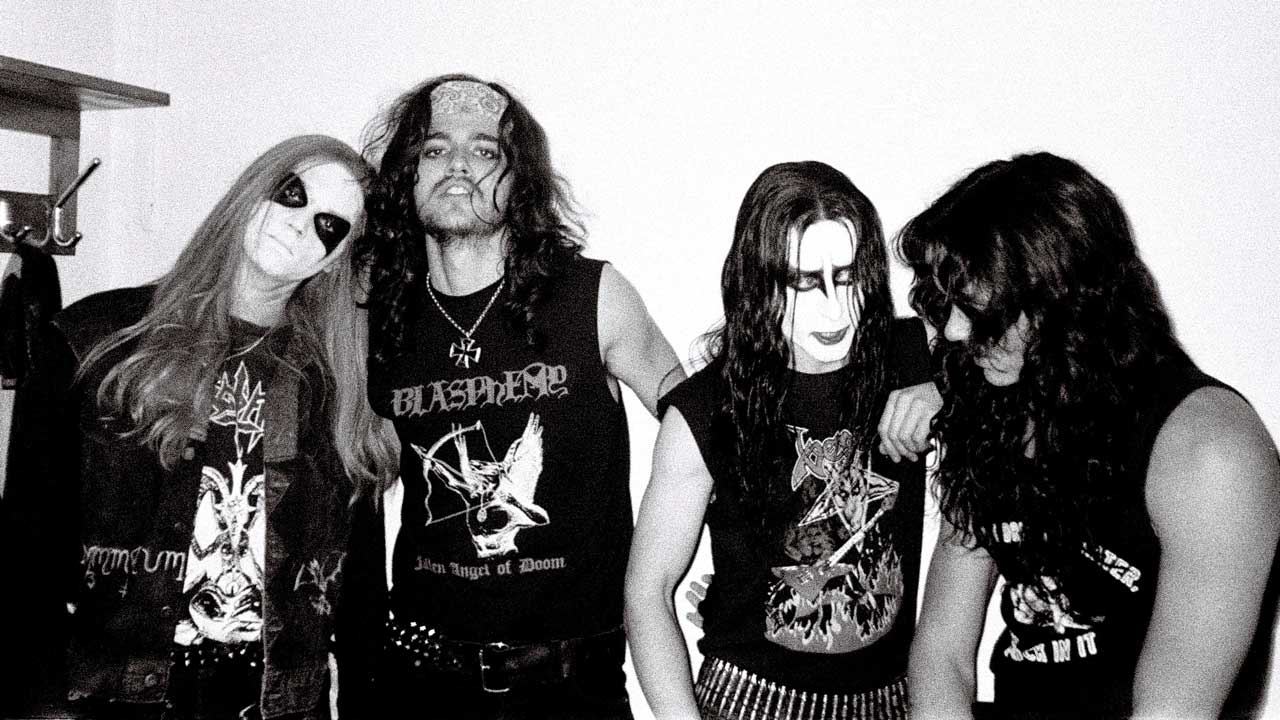
The turning point for Mayhem, that both Lords Of Chaos and The Death Archives agree on, was the introduction of Dead. Having originally sent them an audition cassette accompanied by a crucified mouse, Dead both embodied and amplified the band’s morbid obsessions, introducing corpsepaint and a potent stage presence that ended up with him being bandaged up by a janitor after cutting himself onstage. His death at the band’s rehearsal room in Kråkstad in April 1991, and Euronymous’s decision to take pictures of his corpse – used gruesomely as the sleeve for the 1995 bootleg live album, Dawn Of The Black Hearts – became a catalyst for all the events that were to follow.
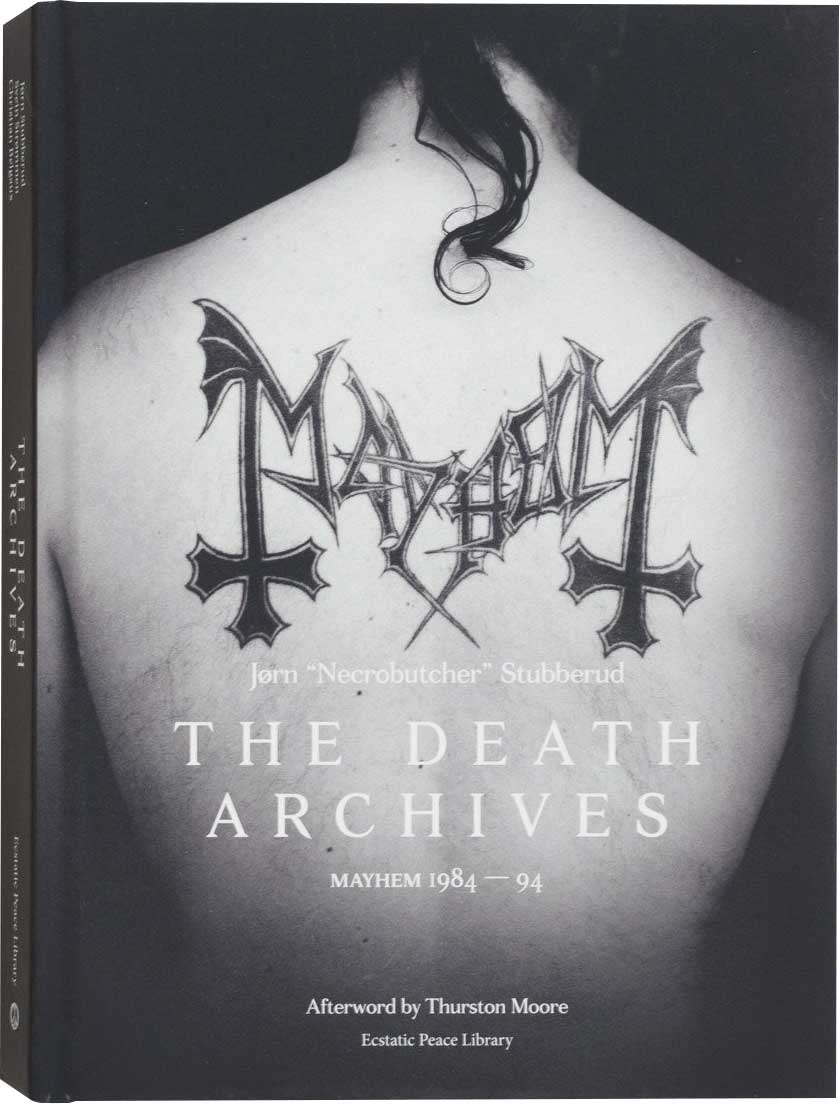
“He was a really cool kid. He was a little wobbly on his feet but he was funny and cool, and his family and everyone who knew him are still very affected by it,” say Jonas, who cast Dead in his first-ever music video, for Candlemass. “I know that Euronymous was very close to him, too, and I tried in the movie to portray that. The fact that he took those pictures kind of fucked everything up. How could you do that if you really care about the other person? But he did! And I keep flashing back to Pelle because I think his involvement in Euronymous’s art is so important. It’s not until the end of the movie that he lets go of it, and I don’t think he could have done that without crying, or feeling something over Pelle. Because I truly don’t believe that Euronymous was a psychopath. I think he was a decent kid that just ended up on the wrong side of stuff.”
The sorrow with which The Death Archives recounts the aftermath of Dead’s suicide, for all the graphic description of coming across his blood-splattered room, is deeply affecting, and for Necrobutcher, the loss of such a close friend is something he’s still trying to come to terms with.
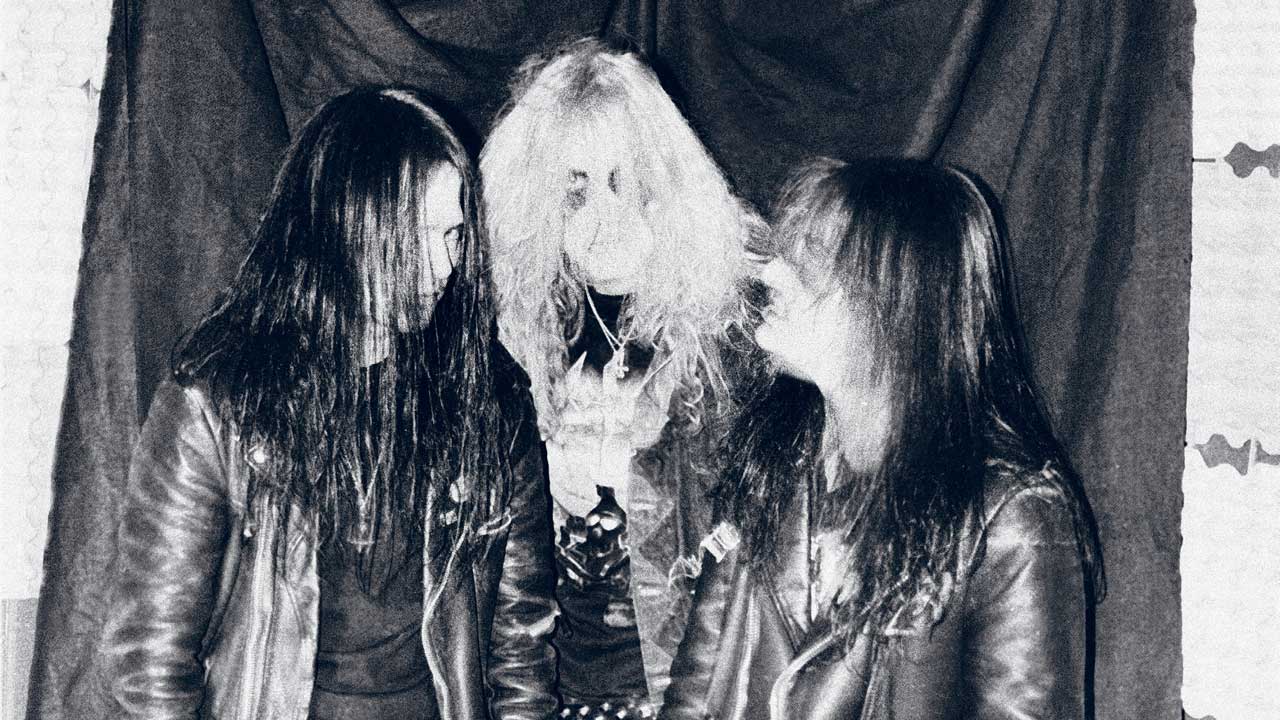
“He came over here just with his bag. He had no place to stay or anything. So I kind of felt that I’d have to take a little bit of care of him, make sure that he had a place to stay, got food. So of course when something happens to somebody you feel you are responsible for it’s a double blow. It’s not like he was very depressed or had psychological problems, it was more like that he was very fascinated with the afterlife. He also had a near-death experience when he was a kid. He told me that he fell on the ice when he was 10 or 11, ruptured his spleen and then he died in hospital for a couple of minutes before they got him back, and that he had seen the tunnel and lights, some music and the whole thing. But then your best friend who you started the band with, and shared so many things with, has such a completely opposite reaction to the suicide. Of course, it was pretty heavy for me to cope with that. Euronymous was not thinking right when he took those photos. He was not thinking as a friend… I still don’t know what he was thinking.”
Emboldened by the notoriety following Dead’s passing (“at least 10-15 bands sprung out of that,” says Necrobutcher), Euronymous opened the record shop Helvete in Oslo, which served as a centre point for the then-burgeoning scene. The new dynamic between Euronymous and Varg becomes the motor on which Lords Of Chaos turns, as mutual respect turns into one-upmanship, and the challenging of each other to prove that black metal isn’t all just so much talk. In this hothouse atmosphere, one solo act of arson escalates into scores of church burnings, the question of whether it’s an act of cultural vengeance against the introduction of Christianity or peer pressure taken to a new level left very much in the singed air.
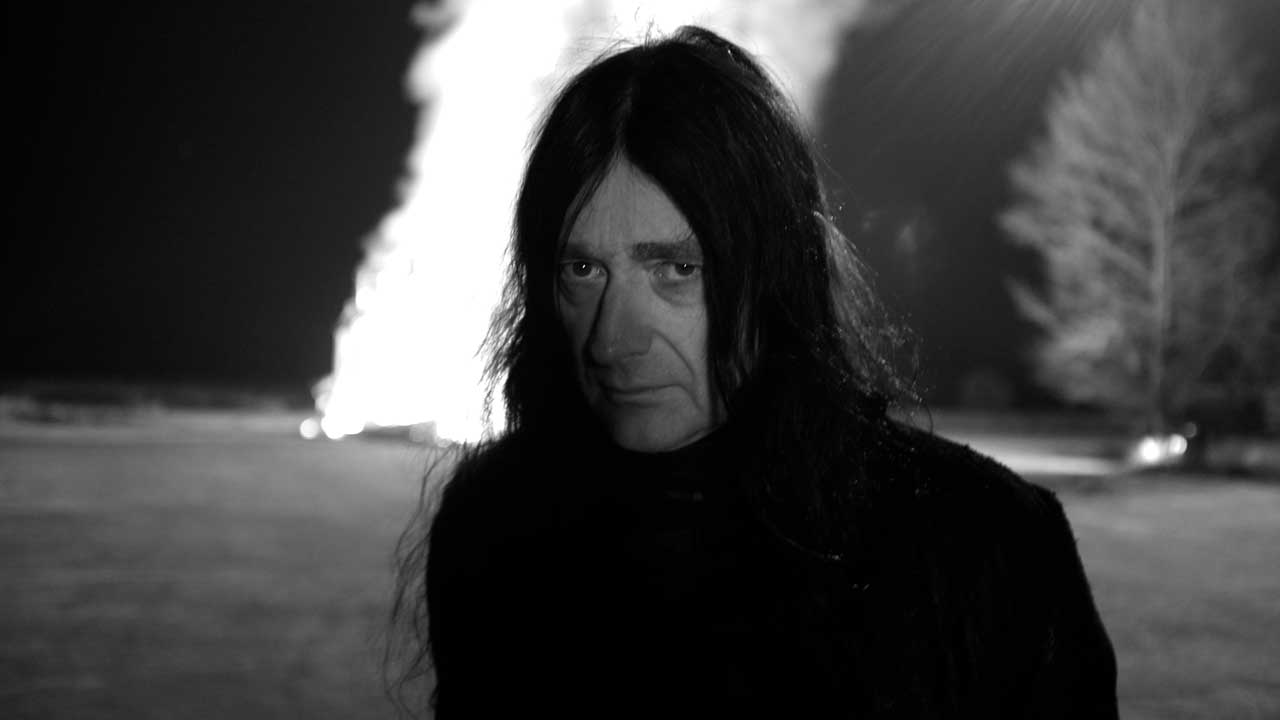
“They were playing around with symbols, having fun with it,” says Jonas, “and then they started to talk about it, and then somebody put something into action, and another person put something more into action, and then, before you know it, you’re in your fucking bubble and you have no idea what you’re doing. And then before you know it, murdering a man is not that big of an idea. It’s a horrible scenario, but I think that’s what happened.”
Does he believe there was a wider purpose for the church burnings?
“I have a hard time seeing that any of these kids were politically or religiously driven at all. I don’t think Satanism or racism or paganism had anything to do with what they did. Maybe now there’s more of a developed reason for it, but for a 17-20-year-old kid, I don’t think that that was the main force.”
Although Jonas talked to many figures in the scene during the making of Lords Of Chaos, Varg’s seclusion since his release from prison in early 2009 means that a crucial jigsaw piece will always be missing. On a narrative level, that leaves a lot of scope for interpretation and to draw something universal out of a very unique set of circumstances.
“If you take out all the black metal and all the gore from the movie,” says Jonas, “it’s really a relationship drama between these two young boys. A lot of people who were there have told me that they were so close; up until only a week before the murder they were inseparable.”
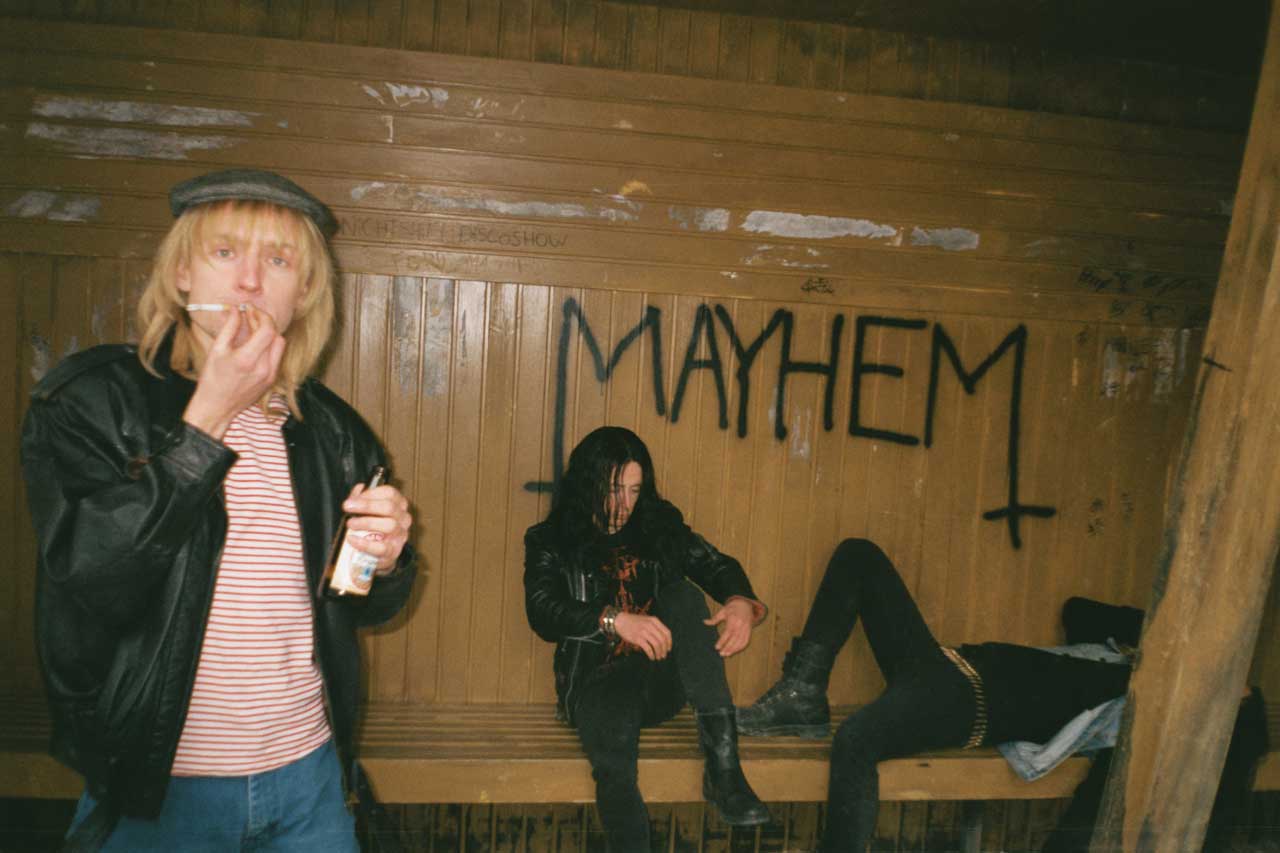
Perhaps even more so than Varg’s motivations for the murder, Lords Of Chaos seems concerned with Euronymous’s process of transformation at the time of his death. The crucial, if factually disputed moment when he flashes back to discovering Dead’s body with tears in his eyes suggests a tale of redemption cut short.
“I don’t think I told this story before, but I got a picture of Euronymous’s dead body from the police investigation,” says Jonas. “This picture is not online, you can’t find it anywhere, but somebody showed it to me. He had blood in his face and it was really hard to see, but I said, ‘It’s not him, he’s got short hair’, and they said, “No, he cut his hair the night before he was murdered.’ And this was a turning point for me as a scriptwriter, because that changed the whole arc. It was such a symbolic thing for a guy at that age at that time to decide to cut his hair. I know he wanted to get out of Varg’s life. I had enough material to indicate that he was on his way somewhere; he really was about to change into something else. So this picture that I saw of his dead body with this short hair really affected me.”
“Euronymous was a very special artist,” Necrobutcher recalls. “I never quite met anybody like him after that, and he’s been dead for 25 years now. When we started to make music together, we were like Lennon and McCartney, Mick Jagger and Keith Richards – we knew what each other was thinking. I never found anybody to work with in quite this way after that.”
From an outside perspective, why does Jonas think that Mayhem’s story is still obsessively pored over, and why black metal is such a powerful, countercultural force today?
“That is the main question, isn’t it? If you think about it, this kind of stuff happens every day. I bet you today, during this
phone call, a kid killed another kid somewhere around the world, and we never hear about it and we never care about it. Maybe it is because they were young, and maybe it is because they took all those pictures, and maybe it is because they were from Norway, or maybe it is because we don’t really know what happened. But the fact that Euronymous was so driven and that everyone else was such great musicians, and Pelle brought the tone and the image, they all really brought something to the table. I don’t know if they would have been as big as Metallica, but imagine the intact version of Mayhem today. They could have been something really special. Although I think that Mayhem today are doing a really great job of bringing the torch into the future.”
“It was a perfect, self-made storm,” says Necrobutcher. “There are so many things on the way that would’ve ended bands, and that made us stronger instead. The idea of Mayhem was always bigger than the events. There are shitloads of people in bands who’ve died under tragic circumstances, but for some reason, this band has more interest than any of those other bands, and since I’m in the middle of it, I can’t see it. The fascination for this story is never-fucking-ending, and I thought I was ready for it, but it’s crazy. But inside of myself I’m thinking, since these were two buddies of mine, if there was an afterlife, and they are looking down on us, they will be very fucking happy with the situation. It’s like I’m laughing together with them sometimes.”
Lords Of Chaos is released on February 8 in the US and March 29 in the UK. The Death Archives, Mayhem 1984 – 1994, by JØrn ‘Necrobutcher’ Stubberud, is out now via Ecstatic Peace Library
